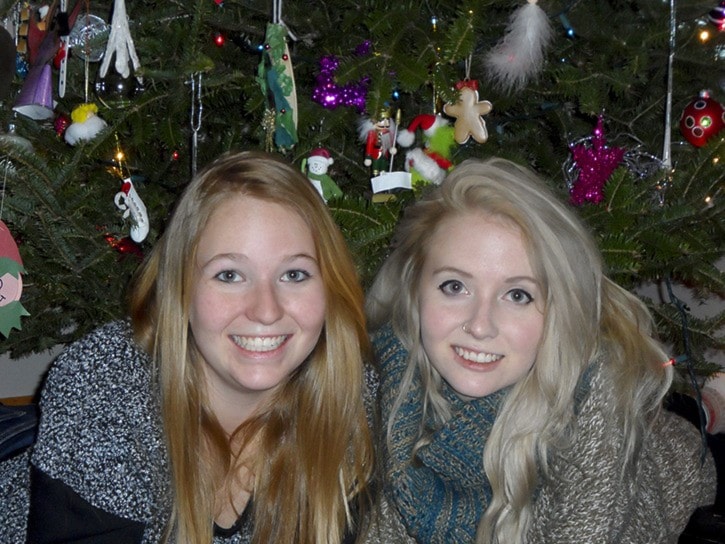Aplastic Anemia. Two words packing one big punch for a former Sylvan Lake resident.
Bailey Smith, now 19, first heard the term when she was 16. She describes this time as one of confusion.
She explained she was tired. The kind of tired sleep never seemed to fix. This was accompanied by an unusually pale tone to her skin.
“Aplastic Anemia ‘AA’ is the deficiency of all types of blood cells (red blood cells, white blood cells and platelets) due to failure of the bone marrow,” explained Smith in her blog she started about her journey with AA titled ‘Stem Cells are Cute’. “In a normal adult, 30-70% of the bone marrow is made up of blood stem cells. My blood stem cells, however, have mostly been replaced by fat cells.”
“AA is most common in teenagers and young adults but sometimes in the elderly as well. The cause for mine isn’t really known, but normally it is caused by chemical exposure, radiation, immune disease and heredity.”
Smith added Marie Curie died from AA after a career of working with radioactive substances. She stated she idolizes Curie as she was the first woman to win a Nobel Prize. Eleanor Roosevelt also died as a result of AA.
Following her diagnosis, Smith received emergency blood transfusions. Her sister Mackenzie, 21, recalls the day her younger sister received her diagnosis.
“She was so anemic they thought she was going to die so she went through an emergency blood transfusion,” remembered Mackenzie.
Shortly after her transfusion it became clear Bailey would need more than blood. Doctors began testing her family members for possible bone marrow transplants. Soon after it became clear the then 18 year old Mackenzie was her best match.
“It’s slightly overwhelming at first to find out you’re some ones closest match, especially when you’re 18 - there was a lot going on,” saidMackenzie, who in October of 2012 became a bone marrow donor for her younger sister. “I didn’t know what to expect and when they tell you what the procedure includes and you hear about how painful bone marrow transplants can be - it’s a bit intimidating, but we pushed through it.”
“A lot of people say it’s really painful and terrible but I never felt that way, I never experienced that and it’s definitely something I would do again because it saves lives.”
Bone marrow transplantation involved doctors drilling three or four holes into Mackenzie’s tailbone to extract her bone marrow.
For two years the pair lived relatively free from the fear of dangers associated with Bailey’s AA. It had appeared the treatment had stuck.Mackenzie returned to Kelowna where she continued studying sciences at Okanagan College. Bailey journeyed to the University of Victoria where she had a full ride scholarship to study geography.
As fate would have it, during a regular check up, Bailey’s doctors noticed a change in her condition.
“I started getting tired again and being sick all the time,” she remembers. “They had been taking my blood work for a few years following the transplant just to ensure everything was fine and they noticed my counts had been gradually dropping.”
Eventually her condition forced her to leave university and return to Medicine Hat where she is staying with her mom until she will again return for another transplant. This time around doctors recommend stem cells and again it will be her sister stepping up to help.
Similar to her last procedure when she was only 16, Bailey must undergo a round of chemotherapy to prep her body for the transplant.
“It [chemotherapy] is not as bad as you think in some ways - but far worse than you could imagine in others,” she recalled. “I got the chills really bad - it was really weird and there was just constant nausea and constant fatigue.”
Bailey will be admitted to the Foothills Hospital on Dec. 23rd where she will begin her chemo and await her sister’s arrival. While her younger sister is undergoing chemo, Mackenzie will undergo daily injections to up her white blood cell counts. On the day of the transplant,Mackenzie will be hooked up to a machine for around 8 hours where her stem cells will be extracted similar to blood donation. The collected stem cells will be pumped through a central line in Bailey’s chest and if all goes well the stem cells will stick and she will be free from the clenches of AA.
Following the procedure Bailey must remain inactive rendering her unable to work or return to school. She added while this month’sChristmas might not top her favourites list, it will hopefully allow her to spend future Christmases alongside her family.
“I won’t be able to go anywhere or do anything for about three months after,” “There’s a chance my body will attack my sister’s cells, but we are a 10/10 match so there’s a good chance it will take but they want me to be close to hospital anyways so we’ll be staying in Calgary.”
To help with Bailey’s recovery costs a Smith family friend, Sylvan Lake resident and Sylvan Lake News sales staff, Shannon Smelt has set up aGoFundMe page. To help Bailey’s recovery and help her to get back to University as soon as possible visit www.gofundme.com/58dz4sc4 orby searching ‘Bailey’s Stem Cell Transplant’ on the GoFundMe home page.
In addition Bailey and Mackenzie both wished to encourage those who are able to donate blood as often as possible with Mackenzie encouraging those willing to donate bone marrow or stem cells to do it, as all of the above have the potential to save lives.
“There’s so many young, eligible people that don’t really think about it. If people donated more then there would never be a need for blood,” said Bailey, who added while getting blood transfusions it gives her ‘warm fuzzies’ to know there are people who have taken timeout of their days to help keep her alive.
editor@sylvanlakenews.com
